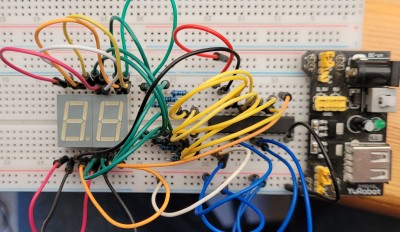Dr Jefyll wrote:
willie68 wrote:
Does anyone know the Output current on High and Low for the output pins?
I find some in the data sheet,but I’m not sure, if they are right.
Is there some reason you doubt the Atf16v8 and atf22v10 data sheets? Just curious.
For me it's not clear, if the term:
IOS(1) Output Short Circuit Current VOUT = 0.5 V -130 mA
is the term per Output pin?
or
ICC Power Supply Current, Standby ?
I simply have problems if this terms means per pin or overall?
Dr Jefyll wrote:
As for your display, I gather you'll have two 7-segment digits of the common Cathode type. So, there are two signals -- those which drive the common cathodes -- which must supply the high current. This can be accomplished by using some sort of buffer between the CPLD and the common cathodes.
I have both types, 8 with common cathode, but a little bit too small, some with common anode, bigger ones. But that's not a problem with the CPLD. Simply negate all output pins... The question is still, can an output of the ATF22V10 handle 80mA current in both directions?
Dr Jefyll wrote:
A couple of discrete transistors -- one for each signal -- would do the trick.

Thats what i meant with
willie68 wrote:
I have to use a single FET Switch.
But with common anode it's not so easy, because i have no P-Channel FET in stock...
Dr Jefyll wrote:
Alternatively, there are various ICs which could do the job. Example: A 74AC240 or '244. On each half, you'd connect the four inputs together and the four outputs together in order to quadruple the current capability.
-- Jeff
I wanted to avoid that. I didn't want to place another order.

Meawhile i have done this without any other parts involved. Simply a ATF22V10C, 2 common anode 7-segmant displays, and 7 150Ohm resistors. works, the chip even get warm.
Just put the actual wpld as attachment, for anyone who likes to use it.
Attachment:
 20220808_104304.jpg [ 544.96 KiB | Viewed 5702 times ]
20220808_104304.jpg [ 544.96 KiB | Viewed 5702 times ]
_________________
don't count on me, i'm engineer (Animotion)
my arduino pages:
http://rcarduino.de






